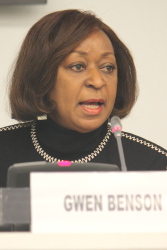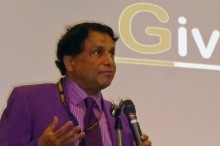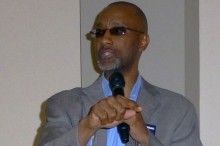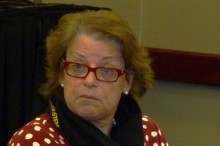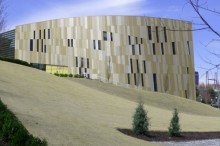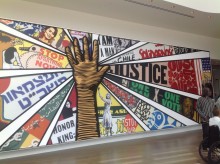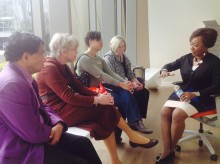2015 Atlanta
Eighth Annual Conference in Atlanta
THINK LOCALLY – BUILD GLOBALLY: AWARENESS THROUGH TECHNOLOGY
Saturday 21 March 2015 8:30 a.m. – 3:00 p.m.
Georgia Institute of Technology
Center for Education Integrating Science, Mathematics and Computing (CEISMC)
David Barnes, Educational Outreach Manager
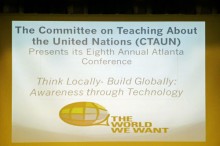 New technologies are transforming how education is practiced around the globe. The purpose of the 8th annual Atlanta CTAUN Conference was to explore, from a global perspective, how teachers and students are using technology to communicate, prepare for the job market, develop critical thinking skills, and to learn and create content. There is little value in just having awareness of technology; what is needed is a thorough understanding of how to use new technology competently and optimize the benefits technology can bring to the learning environment. Topics addressed by presenters included using technology to connect with students, E-learning, and social networking.
New technologies are transforming how education is practiced around the globe. The purpose of the 8th annual Atlanta CTAUN Conference was to explore, from a global perspective, how teachers and students are using technology to communicate, prepare for the job market, develop critical thinking skills, and to learn and create content. There is little value in just having awareness of technology; what is needed is a thorough understanding of how to use new technology competently and optimize the benefits technology can bring to the learning environment. Topics addressed by presenters included using technology to connect with students, E-learning, and social networking.
Dr. Gwen Benson, Associate Dean – College of Education, GSU welcomed the participants to the conference, and stated that this was the 8th CTAUN Conference in Atlanta. She thanked David Barnes of CEISMC, the host and manager of this conference for all his work preparing the program.
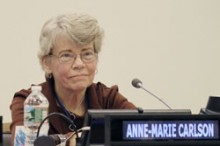 Anne-Marie Carlson, CTAUN Chair, spoke briefly about the work of CTAUN, including the recent Conference held at UN Headquarters
Anne-Marie Carlson, CTAUN Chair, spoke briefly about the work of CTAUN, including the recent Conference held at UN Headquarters marking the 70th anniversary of the United Nations. She had brought information materials about the UN, and invited conference participants to help themselves to those. She then introduced the Keynote Speaker: Ramu Damodaran, Chief, UN Academic Impact, United Nations Focus on Global Connections.
Ramu Damodaran gave a brief overview of UN History beginning with President Roosevelt’s vision, the importance of Global Connections for peace and security, and the vital of role education plays in this context. He stressed that education is a force for transformation, and that is why the UN is promoting everyone’s right and accessibility to education. Mr. Damodadaran’s UN program, Academic Impact, (www.academicimpact.un.org) was established in part to harness global scholarship in the service of innovation and change. He cited several examples of education as a means for transformation in small and big ways, and mentioned that the new Sustainable Development Goals (SDGs) stress life-long 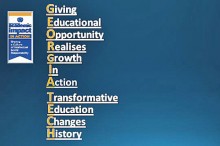 learning. Mr. Damodaran gave an example of former President Carter’s achievement in helping to rescue millions of people from the harmful effects of the guinea worm in Africa, simply by teaching the use of a filter, and enabling the development of a test for River Blindness that gives results in 20 minutes, down from the previously time of six months. Another example of innovation is the young man who helped his blind grandmother by developing a mug with a built-in chip that beeps when the liquid poured into the mug reaches the correct level. Education has the power to transform and we can only speculate how proper education might have averted some of the disasters in history. He stressed the importance of cooperation between countries, and pointed out that one of the first resolutions adopted by the new United States was a resolution on nuclear energy. Education and innovation go hand in hand, and innovation is now transforming education, making it widely available across borders and beyond the classroom.
learning. Mr. Damodaran gave an example of former President Carter’s achievement in helping to rescue millions of people from the harmful effects of the guinea worm in Africa, simply by teaching the use of a filter, and enabling the development of a test for River Blindness that gives results in 20 minutes, down from the previously time of six months. Another example of innovation is the young man who helped his blind grandmother by developing a mug with a built-in chip that beeps when the liquid poured into the mug reaches the correct level. Education has the power to transform and we can only speculate how proper education might have averted some of the disasters in history. He stressed the importance of cooperation between countries, and pointed out that one of the first resolutions adopted by the new United States was a resolution on nuclear energy. Education and innovation go hand in hand, and innovation is now transforming education, making it widely available across borders and beyond the classroom.
Using Technology for Global Learning – Douglas Edwards, Georgia Institute of Technology – CEISMC
Douglas Edwards started his presentation by organizing small “work groups” among the conference participants, and giving each group a hands-on project to solve, which turned out that it could not be solved until a power source (batteries) was made available. This was a mini-version of his project where his students in Atlanta, together with their peers in South Africa, were tasked to solve a power problem. The
students initially communicated via Skype – at first asking each other questions (example: US students -how long is your school day? What kind of sports to you play? Do you have video games? — South African Students: We have many US TV shows here such as Real Housewives of Atlanta. Do you have any South African shows in the US? What is your perception of Africa? Do you picture us with elephant pets singing “Akhuna Mathatha?”) The Georgia Tech students learned from their peers in South Africa that 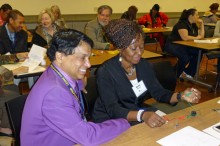 many local families struggle with their electric bills and use candles as light sources, therefore many children lose their lives due to fires from candles. Dr. Edwards and the Georgia Tech students worked to come up with a way to solve this, and together with the South African students (assisted by teachers) they developed and tested materials, decided that Solar Panels would be the solution, and this resulted in the Solar Photovoltaic System Design Construction and Implementation of a full scale solar panel system on the computer lab. The group initiated Solar Pioneers Organizations in 9 South African High Schools. Future plans include working with additional High Schools in Atlanta, and establishing a South Africa Youth STEM program through continued communication via Skype and Social Media.
many local families struggle with their electric bills and use candles as light sources, therefore many children lose their lives due to fires from candles. Dr. Edwards and the Georgia Tech students worked to come up with a way to solve this, and together with the South African students (assisted by teachers) they developed and tested materials, decided that Solar Panels would be the solution, and this resulted in the Solar Photovoltaic System Design Construction and Implementation of a full scale solar panel system on the computer lab. The group initiated Solar Pioneers Organizations in 9 South African High Schools. Future plans include working with additional High Schools in Atlanta, and establishing a South Africa Youth STEM program through continued communication via Skype and Social Media.
Jill Williams, Kenesaw State University, presented TeachLivE™ – a program using a mixed-reality “virtual” classroom with Avatar students to prepare or re-train teachers for the challenges of the real classroom, without harmful effects on real children. These “students” exhibit a range of educational and behavioral challenges, and teachers receive immediate feedback to their interactions through “bug-in-ear” technology. Teachers are also able to practice communications skills on Avatar parents in simulated parent-teacher conferences. More information about this program can be found at www.teachlive.org
These presentations were followed by three concurrent Sessions, each demonstrating an innovative use 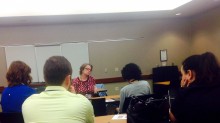 of technology in support of education inside and beyond the classroom. One of the sessions included a discussion of the importance of STEM (Science, Technology, Engineering and Math) in education, especially for girls.
of technology in support of education inside and beyond the classroom. One of the sessions included a discussion of the importance of STEM (Science, Technology, Engineering and Math) in education, especially for girls.
After the lunch break Dr. Richard Welch, Georgia State University, gave an overview of the National Center for Civil & Human Rights (NCCHR).. – which was followed by a tour of the Center. The NCCHR is dedicated to drawing awareness of fundamental Human Rights – showcasing the American Civil Rights Movement as well as drawing a connection to Global Human Rights movements. As the Universal Declaration on Human Rights is one of the pillars of the United Nations this was a fitting conclusion to the conference.

